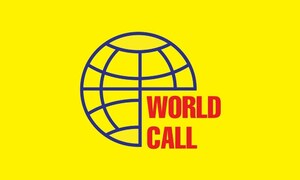LAHORE: Millions of people across the Indo-Gangetic Plain and Himalayan Foothills (IGP-HF) continue to breathe hazardous air with recent atmospheric concentrations of PM2.5, the finest and most dangerous particulate matter that measure less than 2.5 micrometers in diameter, reported to be as high as 20 times the WHO’s recommended daily limit.
With major cities across the region, including Multan, Lahore, New Delhi, Kolkata, and Dhaka seeing elevated levels of smoke, fog, particulate matter, and other air pollutants, researchers at the regional intergovernmental knowledge center, the International Centre for Integrated Mountain Development (ICIMOD), are developing a suite of visualization tools that gives users an option for seeing historical and forecasted trends in local, sub-regional and regional air pollution levels.
Using a combination of real-time data captured from ground sensors and satellite imagery, these visualization tools are hosted on ICIMOD’s Air Quality Dashboard, which is open to the public for use, according to an announcement by the ICIMOD on Monday.
Using one such tool which uses data generated from the Weather Research and Forecasting model coupled with Chemistry (WRF-Chem), the team has been able to show daily PM2.5 levels across the IGP during the first three weeks of November.
The resulting time-lapse shows plumes of PM2.5 stretching across the IGP and reaching out into the Bay of Bengal. The values are as high as 300 micrograms per cubic meter (µg/m³, as daily values) in certain hotspots, including Lahore in Pakistan and New Delhi in India, which is 20 times higher than the World Health Organization (WHO) daily guideline of 15 µg/m³.
The WRF-Chem is a model that helps air pollution scientists understand the interaction between weather and pollution factors, and helps monitor and anticipate outbreaks of air pollution.
Data from WRF-Chem combines data on both local and regional emissions to give a more accurate picture of how air pollution behaves at a transboundary scale, as often seen in the IGP-HF. Visitors can use this tool to get a two-day forecast of likely air pollution scenarios as they unfold.
Copyright Business Recorder, 2024























Comments
Comments are closed.